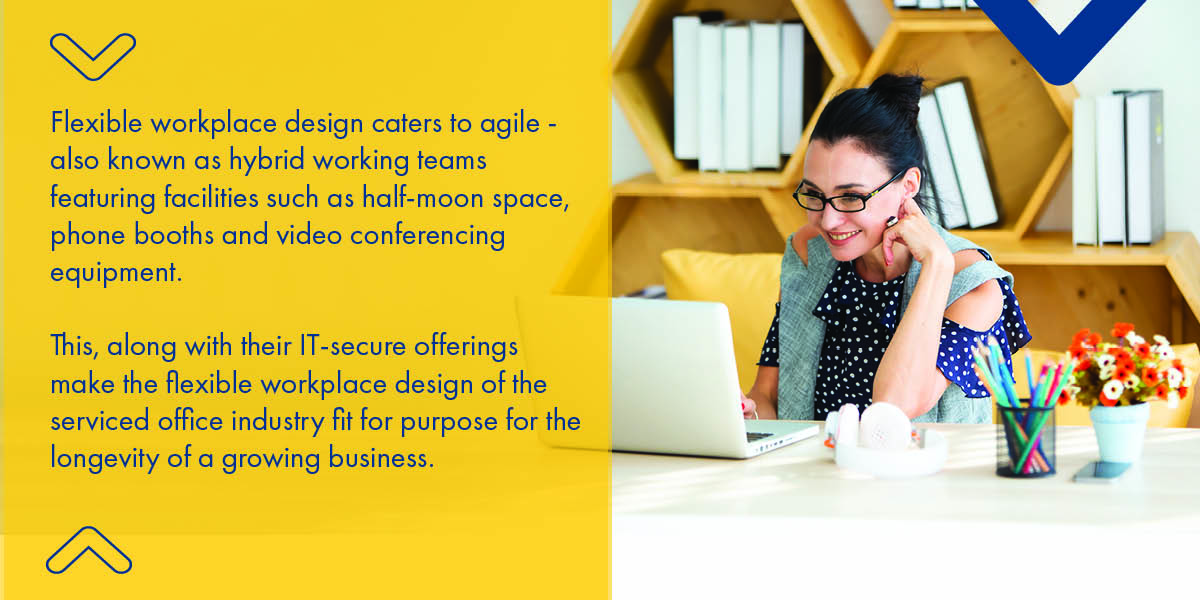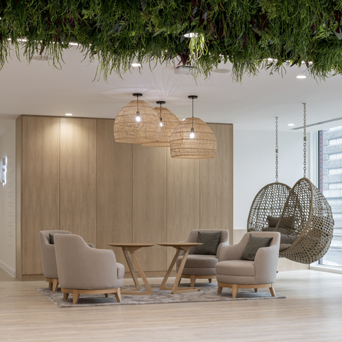Employee turnover is inevitable, especially in 2021; a context wherein 2.4 million staff found themselves furloughed according to BBC News. People have had (albeit in unfortunate circumstances) an opportunity to pause, regroup and reconsider what they prioritise in their work. LinkedIn reportedly found in 2021 the following industries with the highest turnover rates. They were as follows:
Notably, these are fast-growing sectors and their turnover rates can be attributed to several factors. Newsflash: this means your workplace design matters more than ever when it comes to recruiting - and retaining - the best people for your growing business. One way you can do this is to ensure the work environment you are providing your teams is leveraging all it can to help your people thrive. Read on to discover the 4 crucial reasons flexible workplace design can be used as a powerful recruiting tool for these ever-growing sectors.
1. They provide fantastic Networking opportunities that boost your company culture

According to a recent Career Builder Survey, 66% of people quit within the first 6 months, and almost half blamed toxic work culture. Your company culture must be embraced and ingrained into your new hires.
One sure-fire way to do this?
Use the space you have to emanate what you stand for. Serviced offices actively encourage their tenants to embrace flexible workplace design to its full potential by offering a range of inspiring and diverse event spaces
A whole host of providers offer cinema spaces, presentation spaces/auditoriums, podcasting booths, rooftop terraces with bars, and more! The significance of Networking cannot be overstated for growing businesses. They encourage like-minded entrepreneurs to mingle, exchange best practice advice, boost their brand and extend their connections whatever industry you're in.
2. Flexible workplace design accommodates agile working
Similar to flexible working, this means employing malleable and adaptable working practices. Employers are embracing agile working allowing their teams to work as, when, and how it suits the employee. It is an increasingly desired and expected condition of work and has been on the rise, seeing a sharp incline given the pandemic.
Aon's Benefits and Trends Survey back in 2019 found that over a third of employers now have an agile working policy, and 89% of respondents expect agile working options to move forward.
For growing businesses, it's important that shifting staff expectations are taken into consideration when it comes to recruiting newbies. (Read more about the shifting expectations of your staff here).

Flexible workplace design caters to agile - also known as hybrid working teams featuring facilities such as Half-moon space (link to blog), phone booths and video conferencing equipment. This, along with their IT-secure offerings make the flexible workplace design of the serviced office industry fit for purpose for the longevity of a growing business.
3. Flexible workplace design tends to be sustainable, aligning with the values of the younger generations entering growing businesses.
Millennials (those born between 1981 and 1996 and Gen Zers (those born between 1997 and 2012) tend to have a shorter tenure in any one company compared to Baby Boomers, BLS found. "The median tenure of workers ages 55 to 64 is 9.9 years, per the BLS. That’s more than triple the tenure of workers ages 25 to 34, which is just 2.8 years."
> logically, then, those you will be recruiting are likely to be in the younger brackets - and their values are (rightly) aligned with the good of the planet. The blockchain-based clean energy platform, Swytch's survey found that 64% of Millennials prioritise working at a company that is sustainably responsible.
This means a push for greener, zero-carbon omitting spaces. Business investors KPMG found that 69% of Millennials would trade other benefits for a better workplace. Often, a 'better' workspace boils down to a greener one.
The BBP (Better Building's Partnership) published a Press Release earlier in 2021 detailing the successful refurbishment programme is at Chester House, Kennington Park. Workspace 'cut the building’s whole lifecycle carbon emissions by almost 25% by refurbishing rather than demolishing and rebuilding the property.'
Greener matters - for the planet, to entice your future teams, but also when it comes to boosting employee wellbeing and productivity. The serviced office industry is responding to a market increasingly concerned with workspace’s light and air quality. There are numerous studies that back up the profound impact biophilia has on the workplace. The Global Impact of Biophilic Design in the Workplace Report, for example, points to the 15% higher level of wellbeing reported in workplaces that incorporate natural elements. Read more about the benefits of biophilia in the workplace here.
4. Flexible workplace design brings with it incredible work perks: show your team you are a vibrant company by inspiring them when they come to work.
Flexioffices research found a whopping 44% of respondents agree that team-building opportunities boosted their career/growth development and this directly correlates with what we know about retention rates when it comes to holding on to your top team. Not just for their event spaces - but for the facilities flexible workspace design places at their heart. Flexible workplace design grants employees access to a range of fantastic perks such as:
- Gym access
- Free fitness classes,
- Wellness rooms,
- Yoga,
- Puppy-petting sessions,
- Free coffees, teas, fruit baskets - some even have prosecco taps (hello thirsty Thursdays)
- Childcare
- Providing a range of aerodynamic furniture and working environments
The most important feature that all serviced offices make much of is the workspace design itself.
Office Space In Town Tudor Street, for instance, have an entire building dedicated to employee happiness. Winner of the London Interior Design Award at the British Awards, it has been designed to make your teams' smile and boost morale. Featuring everything from a secret arcade room to a lego-themed meeting room, this remarkable building makes much of its flexible workspace design.



The main takeaways
1. Networking boosts your company culture
2. Accommodates agile working
3. They're sustainable and this attracts new recruits
4. Your team can better reap the benefits of a range of work perks
What can you do as a business to bring your people back together in the office?
Reach out to Flexioffices and we'll put together a shortlist of options so you can find the workspace that fits your company like a glove.